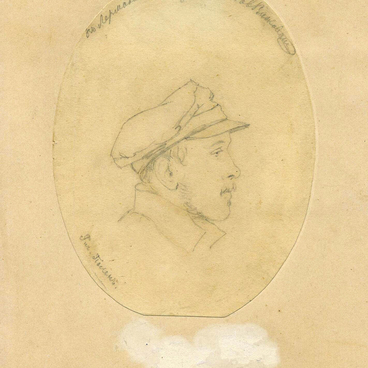The poet Gavrila Romanovich Derzhavin was depicted by numerous painters of the late 18th and 19th centuries. Among them were Vladimir Borovikovsky, Alexander Vasilevsky, and Salvatore Tonci. In most portraits, he is depicted as an old man, having achieved fame and recognition. The portrait of Derzhavin by an unknown artist, which is part of the collection of the Institute of Russian Literature, is considered to be one of the earliest images of the poet and dates back to the 1780s. During that period, Derzhavin wrote some of his most significant works, including “Ode to Felicia”, “Mirza’s Vision” (both dedicated to Catherine the Great), as well as “Ode to the Deity”, and many others.
In 1783, Derzhavin became a full member of the Russian Academy and participated in the compilation of the first explanatory dictionary of the Russian language. From 1786 onwards, Gavrila Derzhavin served as governor of the Tambov Governorate. The poet proved himself as an enlightened leader and left a significant mark on the history of the region. During his tenure, several public schools, a theater, and a printing house were established, where the first provincial newspaper of the Russian Empire, “Tambov News”, was published in 1788. Under his leadership, a master plan for Tambov was drawn up and paperwork was streamlined. An orphanage, almshouse, and hospital were also built. Soon after, Gavrila Derzhavin was appointed cabinet secretary to Empress Catherine II.
Derzhavin is depicted wearing an embroidered silk velvet caftan, with the Orders of Saint Vladimir 3rd Class and Saint Alexander Nevsky. According to some researchers, the medals were painted later. This has been confirmed by the results of an examination conducted by a laboratory at the Repin Institute. The portrait was determined to have been created before 1787, the year Derzhavin received his first order. The image is based on an original painting by Dmitry Levitsky that has not been preserved. In terms of its features — the position of the figure and its small scale — it is similar to a portrait of the architect and poet Nikolay Lvov, created at the same time by Levitsky from the collection of the State Russian Museum. The portrait is attributed based on the study of the poet’s images.


